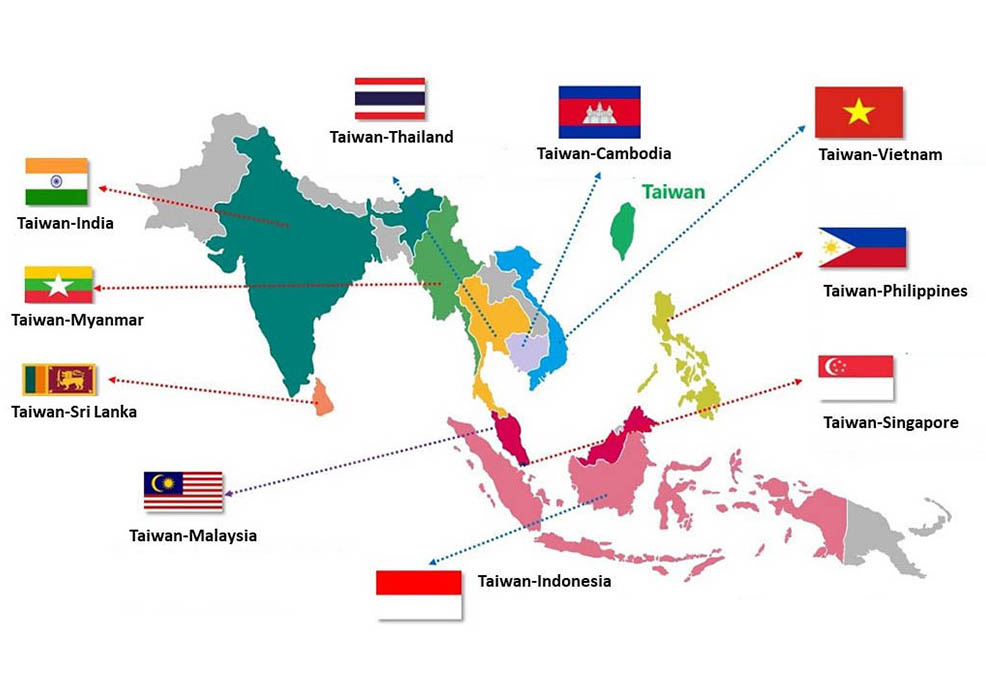Taichung City’s Regional Revitalization Creates a New Opportunity for Sustainable Development—How to "Let the Children Return...

- HUMANITIES & SOCIAL SCIENCES
- Text & Image
- February 20,2021
The world has changed significantly since the COVID-19 outbreak in 2020. The tourism, catering, and wholesale industry are strongly hit by the pandemic, and supply chain of high technology industries are being disrupted by lockdown restrictions. However, these challenges also urge the industry to seek solutions from smart and digital manufacturing to minimize the negative impact of the pandemic, which has surprisingly accelerated the development of high technology and digital industry. Meanwhile, the biomedical industry has been growing due to the need for epidemic prevention materials and technologies. This article aims to give an insight into the impact of COVID-19 on global science and technology development and will hence focus on Taiwan’s R&D opportunities in the post pandemic era.
COVID-19 impact on global technology development
At the beginning of the 20th century, the Spanish flu transformed the world in many aspects, for example, it caused the shortage of labor force which increased women in the workforce, and most importantly the disease showed the world the importance of public health and comprehensive medical system. Up until the 21st century, humans are still fighting with all sorts of emerging infectious diseases, from SARS in 2003, H1N1 in 2009, MERS in 2012 to COVID-19 the world is facing now. But different from the past, we now have more advanced knowledge in public health and epidemic prevention and new technologies that can be used in combating the virus. And despite the pandemic’s impact on society, it has also brought new inspiration for science and technology development in the future.
Technologies such as artificial intelligence and big data are widely used in the public health system to slow down the spread of the epidemic, and in the meantime, industries are using these technologies to reduce the demand for manpower and the economic loss caused by epidemic prevention policies. Moreover, the industry starts to realize the importance of the flexibility of the labor market and information management. To improve the flexibility of the work environment and strengthen the industry’s digital database and information security, the industries are trying to apply digital technologies and create a more resilient supply chain in response to different challenges in the future.
The COVID-19 pandemic has impacted the industrial and economic development of the world; however, it has also prompted us to develop remote technology, artificial intelligence, virtual reality, information security, and automated production lines to adapt to the changes the epidemic brought. In addition, the pandemic has made the industry understand the importance of digital transformation at all levels, which includes supply chain reconstruction, human resource allocation and management in the post-epidemic era, and information security protection and data management issues during remote work.
Key Technology Applications in the Post Pandemic Era
In the post-epidemic era, our lives are gradually relying on the Internet and remote technology, which drive the development of zero-contact economy and the transformation of medical industries such as telemedicine. To encourage the research community to help combat the virus with high technology, the National Center for High-performance Computing under MOST initiated "Defending Taiwan--Fighting the Pandemic with Technology Project" during the pandemic. The project allows applicants to use supercomputers “Taiwan AI Clouds” to analyze data and apply them to epidemic prevention-related work, such as medical-related image identification and data exploration, electronic fences for epidemic prevention, and online chatbot for public health knowledge and pandemic information communication. Take Taiwan’s official LINE epidemic prevention chatbot, which is currently used by more than 2 million people in Taiwan, as an example, it is using big data and AI chat robots to reduce the labor burden and has become the government's best tool for epidemic prevention and policy communication during the pandemic. At the beginning of the outbreak, there was misinformation about the virus and Taiwan’s government used the LINE chatbot to provide people with the correct concept of epidemic prevention to accelerate the dissemination of official information and bring stability to the public.
Due to the pandemic, many schools have changed courses to online teaching, and companies have allowed employees to work from home, which makes remote technology and online meeting systems more important than before. Meanwhile, telemedicine has become important during the pandemic since it allows people with symptoms of cold or other diseases to get treated without entering the hospital and reduce the risk of contracting the virus. For example, Taiwan’s AI smart medical expert Dr. Yu-Chuan Li and Dr. Po-Yu Shih launched the "TWcanhelp Program" to provide people at home and abroad with free online dermatology consultation and instant professional knowledge at the beginning of the COVID-19 outbreak.
Facing all the challenges brought by COVID-19, it is necessary to integrate digital technology, develop cross-domain smart application technologies, deepen the development of digital networks and information security, and expand more comprehensive smart industries in the future. Also, in the post pandemic era, the government should strengthen local digital construction to cultivate cross-disciplinary talents and avoid the rise of online distance teaching leading to the expansion of the digital gap and the gap between urban and rural areas.
Taiwan’s Technology Development and Challenges in the Future
Taiwan’s research achievements and its epidemic prevention measures have been seen by the world in this pandemic. Taiwan has successfully used the country’s solid foundation of IoT, AI, and big data technologies to fight against COVID-19 and has become the model of epidemic prevention with rising economic growth in this difficult time.
In 2020, Taiwan faced multiple challenges such as COVID-19, the China-US trade war, the technology war, the aging society, and the declining birthrates. The Taiwan government convened the 11th National Science and Technology Conference in December 2020 and summed up four major aspects of future S&T development, including talent cultivation, scientific research and strategic technology, digital innovation and sustainability, and secure society and smart living. The four major aspects show that in the post-epidemic era, Taiwan will focus not only on basic research and development but also on cross-field talent cultivation and industrial applications. In 2021, Taiwan will continue to accumulate scientific research capabilities to respond to the rapidly changing world situation with the concept of "innovation, tolerance, and sustainability".
STAY CONNECTED. SUBSCRIBE TO OUR NEWSLETTER.
Add your information below to receive daily updates.




